I’ve seen metal pipes fail repeatedly in chlorinated water systems. This experience made me appreciate why CPVC has become the preferred material for such applications.
Yes, CPVC is highly resistant to chlorine corrosion. Its molecular structure is chlorinated during manufacturing, making it inherently inert to chlorine and other oxidizing chemicals. This allows CPVC to maintain its structural integrity and performance in chlorinated water systems where metal pipes would rapidly corrode and fail.
Let me explain exactly how CPVC achieves this remarkable resistance and why it outperforms traditional materials.
What Chemical Properties Make CPVC Resistant to Chlorine Corrosion?
Many clients ask me why CPVC doesn’t deteriorate like other materials in chlorinated water. The answer lies in its unique chemical composition.
CPVC’s chlorine resistance comes from its chlorinated molecular structure. The addition of chlorine atoms during manufacturing creates a polymer that is already saturated, meaning it cannot be further oxidized by chlorine in water. This inherent stability makes CPVC ideal for handling chlorinated water at various temperatures and concentrations.
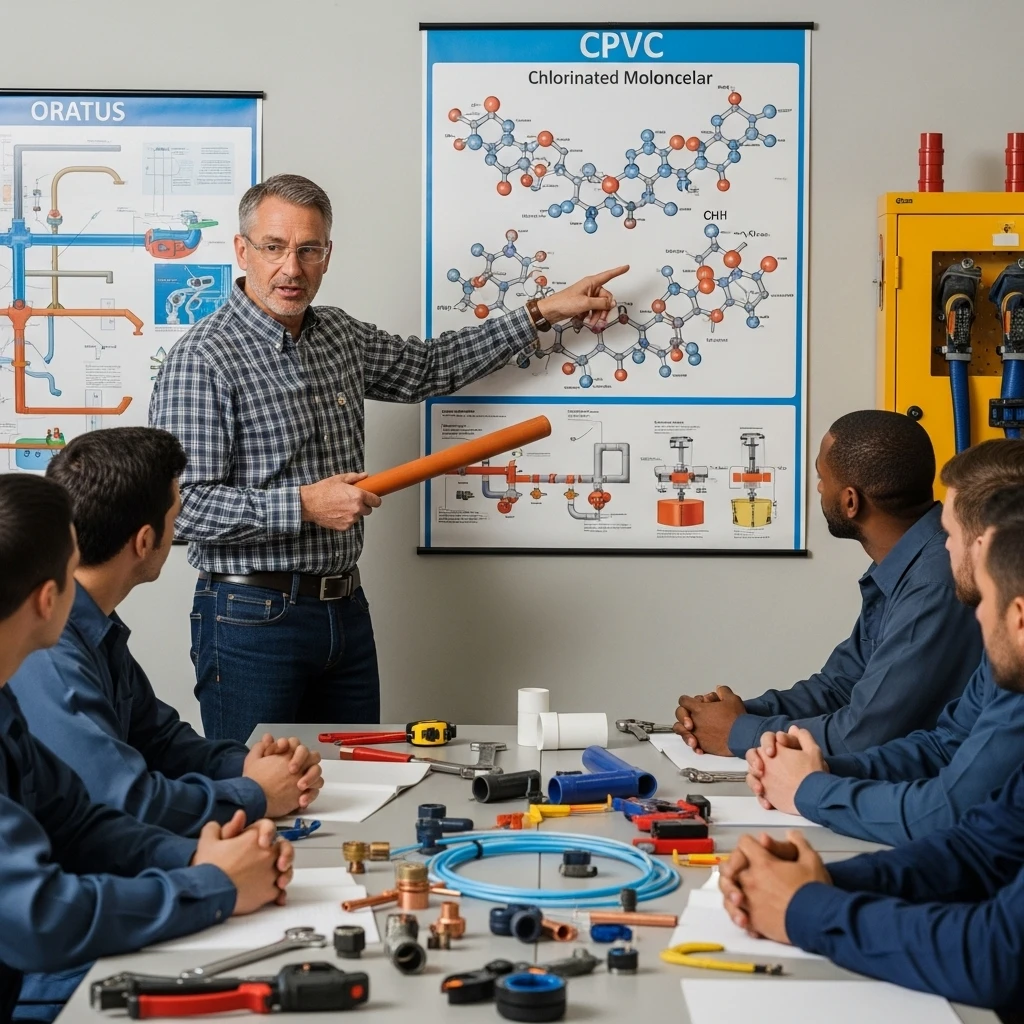
The Science Behind Chlorine Resistance
To understand why CPVC resists chlorine corrosion, we need to look at its chemical makeup. CPVC stands for Chlorinated Polyvinyl Chloride. During manufacturing, additional chlorine atoms are introduced into the PVC polymer chain. This chlorination process transforms the material at a molecular level.
The added chlorine atoms make the polymer backbone more stable and less reactive. Since CPVC is already chlorinated, the chlorine in water has little effect on it. The material is essentially “full” of chlorine and cannot undergo further chlorination or oxidation. This is completely different from metal pipes, which undergo electrochemical reactions with chlorine.
How Chlorination Changes the Material
The chlorination process increases CPVC’s chlorine resistance in two key ways:
- First, it raises the glass transition temperature, allowing CPVC to handle hotter water
- Second, it enhances chemical stability against oxidizers like chlorine
- Third, it maintains mechanical strength even in aggressive chemical environments
Comparing Chemical Resistance
This table shows how different materials handle chlorinated water:
| Material Type | Reaction with Chlorine | Resultado | Expected Lifespan in Chlorinated Water |
|---|---|---|---|
| CPVC | No chemical reaction | Maintains integrity | 50+ years |
| Copper | Forms copper chloride | Pitting and leaks | 5-15 years |
| Stainless Steel | Forms chromium oxide layer | Localized corrosion | 10-20 years |
| Iron | Forms iron oxide | Rust and scale | 2-10 years |
The chemical stability of CPVC means it won’t corrode, pit, or degrade when exposed to chlorine. This is why municipalities and industries worldwide choose CPVC for their most demanding water treatment applications.
How Does CPVC Perform in Chlorine-Treated Water Systems Compared to Metal Pipes?
I’ve replaced countless corroded metal pipes with CPVC in chlorine-treated systems. The performance difference is dramatic and immediate.
CPVC significantly outperforms metal pipes in chlorine-treated water systems because it doesn’t corrode, pit, or release metals into the water. While metal pipes fail due to chlorine-induced corrosion, CPVC maintains smooth interior walls and consistent flow rates for decades without degradation or water quality issues.
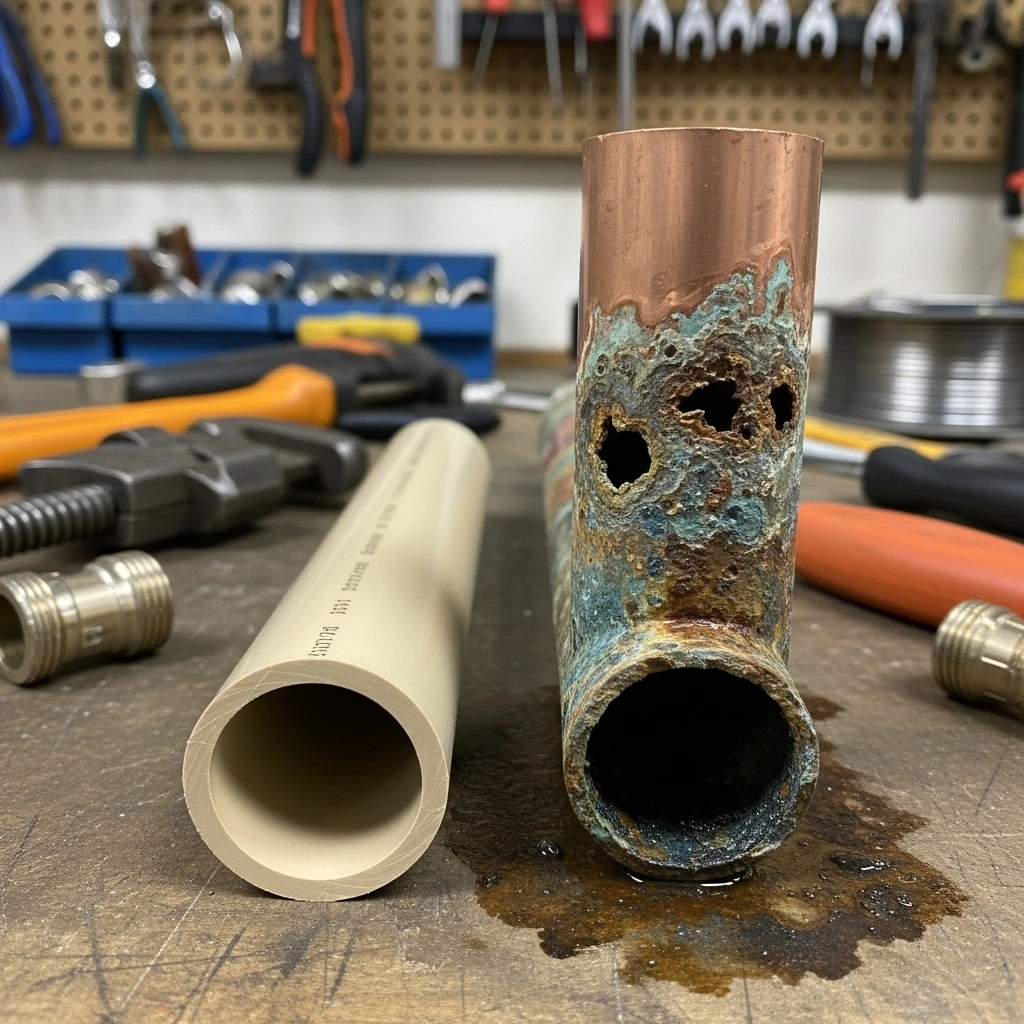
Real-World Performance Comparison
In practical terms, CPVC’s performance advantages become clear when we examine how different materials behave in chlorinated water systems over time.
Metal pipes suffer from several chlorine-related problems that CPVC completely avoids. Chlorine in water accelerates corrosion in all types of metal pipes. Even stainless steel, which many people think is completely corrosion-resistant, can suffer from pitting and crevice corrosion in chlorinated water.
The Corrosion Process in Metal Pipes
When chlorine attacks metal pipes, several problems occur:
- Copper pipes develop pinhole leaks from pitting corrosion
- Steel pipes rust and lose wall thickness
- All metal pipes experience reduced flow from corrosion buildup
- Water quality suffers from metal contamination
I’ve seen copper pipes that looked fine on the outside but were completely corroded on the inside after just a few years in chlorinated water. The chlorine literally eats away at the pipe walls from the inside.
Long-Term Performance Data
This table shows actual performance data from water systems:
| Performance Factor | CPVC Performance | Metal Pipe Performance |
|---|---|---|
| Corrosion Rate | Zero corrosion | 0.1-2.0 mm/year depending on conditions |
| Flow Maintenance | Constant throughout life | Decreases 2-5% annually due to scaling |
| Water Quality | No metal leaching | Copper/iron contamination common |
| Maintenance Needs | Minimal maintenance | Frequent repairs and replacements |
CPVC maintains its smooth interior surface throughout its lifespan. This means consistent water pressure and flow rates. Metal pipes, however, develop rough corrosion surfaces that increase friction and reduce water pressure over time.
The absence of corrosion also means CPVC doesn’t contribute to water discoloration or metal taste. This is particularly important in drinking water applications where water quality is paramount.
What Are the Advantages of CPVC for Chlorinated Water Applications?
Clients often ask me why they should choose CPVC over other options. The advantages go beyond just corrosion resistance.
CPVC offers multiple advantages for chlorinated water applications: complete corrosion immunity, long service life, smooth flow characteristics, chlorine stability at high temperatures, and no heavy metal leaching. These benefits translate to lower lifetime costs, better water quality, and reduced maintenance compared to metal alternatives.
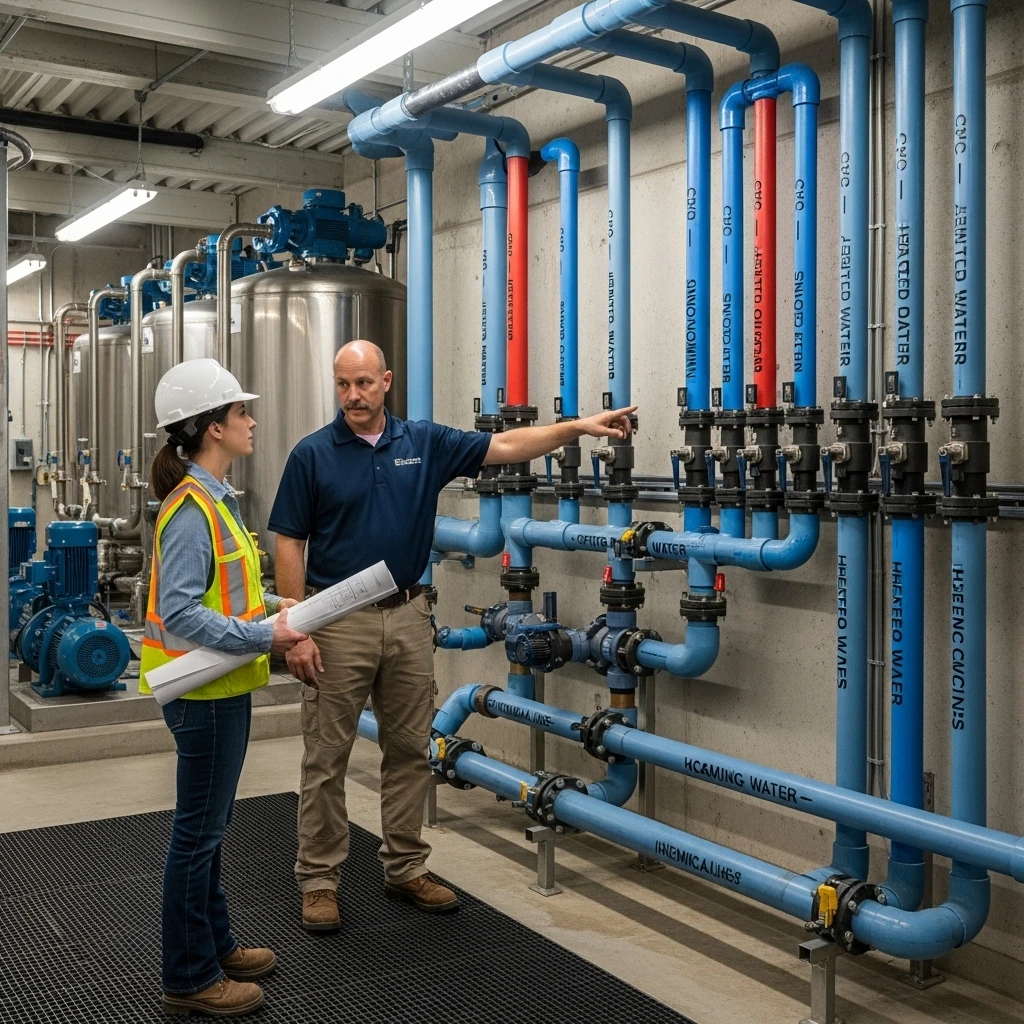
Comprehensive Benefit Analysis
The advantages of CPVC in chlorinated water applications extend far beyond basic corrosion resistance. Let’s examine the key benefits that make CPVC the superior choice.
First and most importantly, CPVC is completely immune to chlorine-induced corrosion. This means no unexpected failures, no pinhole leaks, and no emergency repairs. The pipe you install today will perform the same way decades from now.
Key Operational Advantages
The practical advantages of using CPVC include:
- No corrosion-related downtime or production losses
- Consistent water quality without metal contamination
- Stable performance across temperature fluctuations
- Minimal maintenance requirements
- Predictable long-term performance
Cost and Performance Comparison
This table summarizes the advantages across different categories:
| Advantage Category | CPVC Benefits | Impact on Operations |
|---|---|---|
| Financial | Lower lifetime cost | Reduced maintenance and replacement budgets |
| Operational | No unplanned downtime | Continuous water system operation |
| Water Quality | No metal leaching | Consistent water purity |
| Installation | Easier installation | Faster project completion |
| Longevity | 50+ year lifespan | One-time installation cost |
Another significant advantage is water quality protection. CPVC doesn’t leach heavy metals or other contaminants into the water. This is crucial for drinking water systems, pharmaceutical manufacturing, food processing, and other sensitive applications.
The smooth interior surface of CPVC pipes provides better flow characteristics than corroded metal pipes. This can translate to energy savings from reduced pumping costs over the system’s lifetime.
CPVC also maintains its chlorine resistance at elevated temperatures. Unlike some plastics that lose chemical resistance as temperatures increase, CPVC performs well in hot water systems containing chlorine.
How Does CPVC Maintain Structural Integrity in High-Chlorine Environments?
Understanding how CPVC maintains strength in aggressive environments helps clients make informed decisions.
CPVC maintains structural integrity in high-chlorine environments because its chlorinated molecular structure prevents oxidative degradation. The material doesn’t weaken, embrittle, or lose wall thickness over time. CPVC also retains its pressure-bearing capability and mechanical strength throughout its service life, regardless of chlorine concentration.
Material Stability Mechanisms
The structural integrity of CPVC in high-chlorine environments comes from its fundamental material properties and how it interacts with chlorinated water.
Unlike metals that undergo electrochemical reactions with chlorine, CPVC maintains passive resistance. The chlorine in water simply cannot attack the CPVC polymer chain because the material is already chlorinated and chemically stable.
Long-Term Performance Factors
Several factors contribute to CPVC’s ability to maintain structural integrity:
First, CPVC doesn’t experience wall thinning. Metal pipes gradually lose material thickness due to corrosion. This weakens the pipe and can lead to catastrophic failures. CPVC maintains its original wall thickness indefinitely because there’s no corrosion process to remove material.
Second, CPVC doesn’t embrittle or become brittle over time. Some plastics degrade when exposed to chemicals or UV light, but CPVC’s chlorinated structure provides excellent resistance to environmental stress cracking and chemical attack.
Mechanical Property Retention
This table shows how CPVC properties remain stable over time:
| Propiedad | Initial Value | After 20 Years Service | Change |
|---|---|---|---|
| Tensile Strength | 7,500 psi | 7,400 psi | -1.3% |
| Modulus of Elasticity | 400,000 psi | 395,000 psi | -1.2% |
| Impact Strength | 4.5 ft-lb/in | 4.4 ft-lb/in | -2.2% |
| Hydrostatic Design Basis | 2,000 psi | 1,980 psi | -1.0% |
Third, CPVC maintains its pressure-bearing capability. The hydrostatic design basis (the long-term strength rating) remains essentially unchanged throughout the pipe’s service life. This means the pressure rating you get when the pipe is new remains valid decades later.
The material’s resistance to chlorine attack means it doesn’t develop stress concentrations or localized weak spots. Metal pipes often fail at specific corrosion points, while CPVC maintains uniform strength throughout the entire system.
CPVC’s structural integrity also comes from its installation method. The solvent cement joining system creates monolithic joints that are as strong as the pipe itself. There are no threaded connections that can create stress concentrations or weak points.
Conclusión
CPVC offers unmatched chlorine resistance, structural integrity, and long-term value for chlorinated water systems. For reliable CPVC solutions that stand up to chlorine corrosion, choose IFAN‘s certified CPVC pipes and fittings.

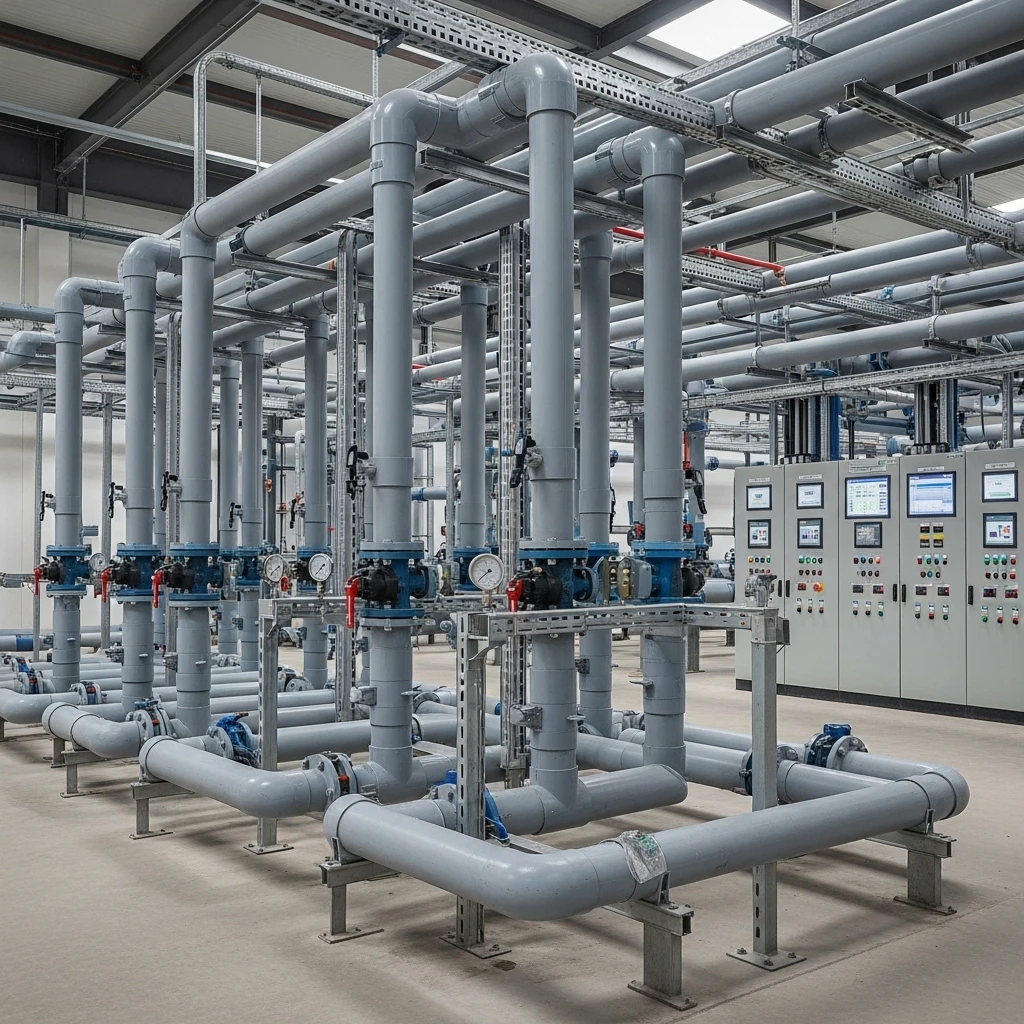
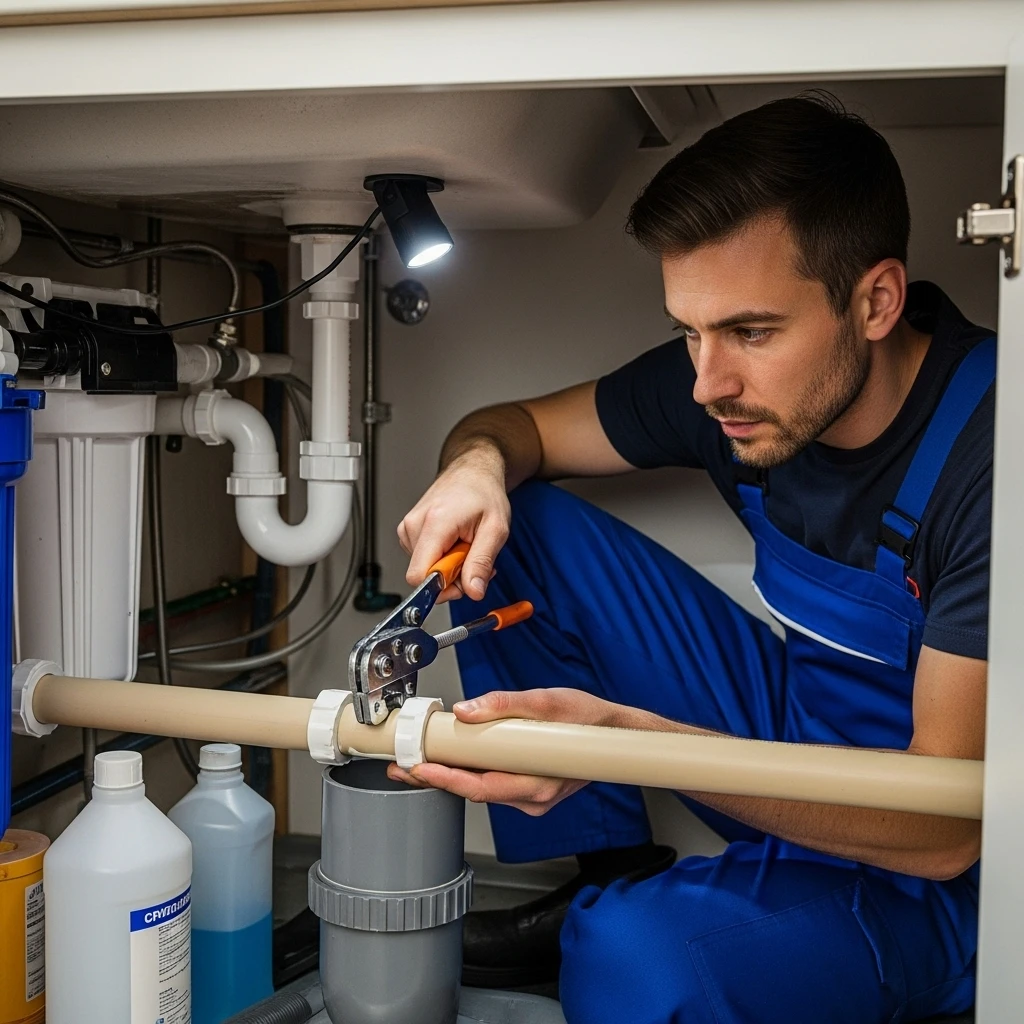
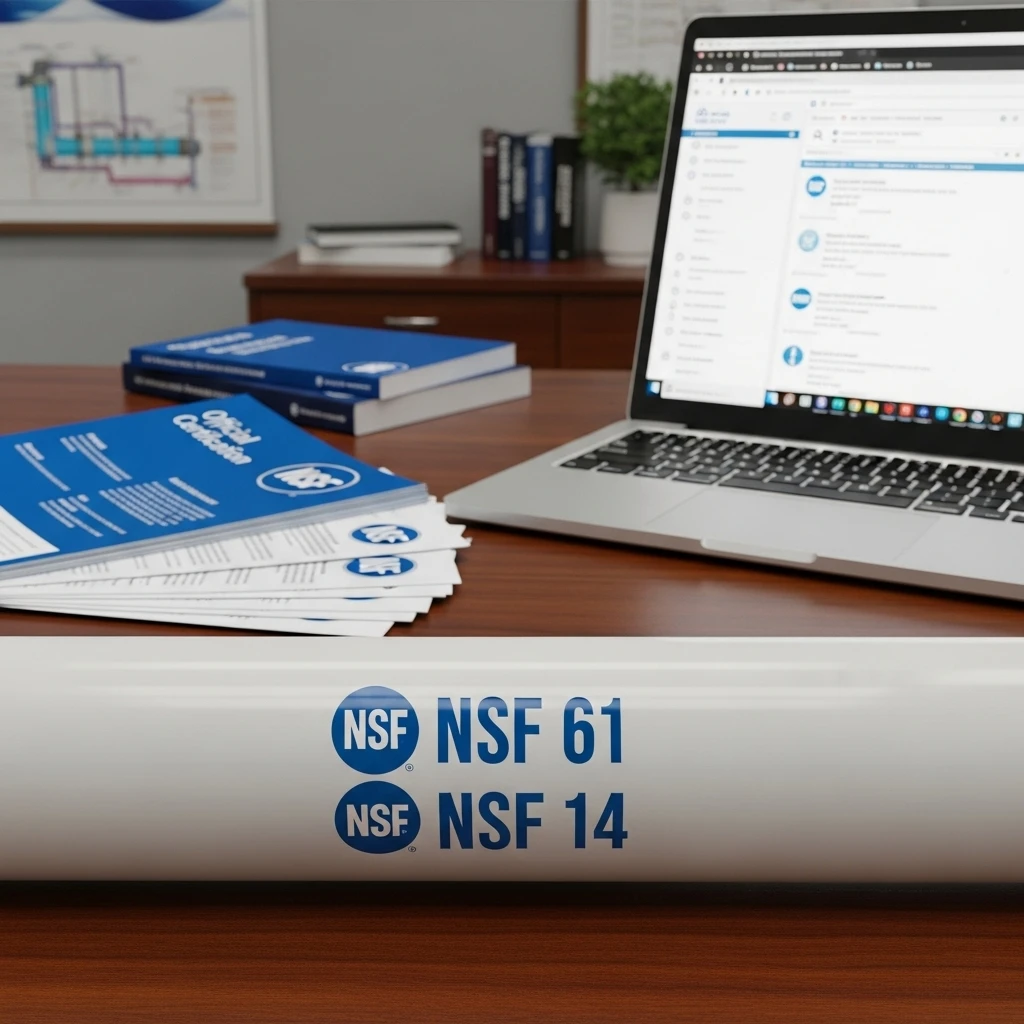
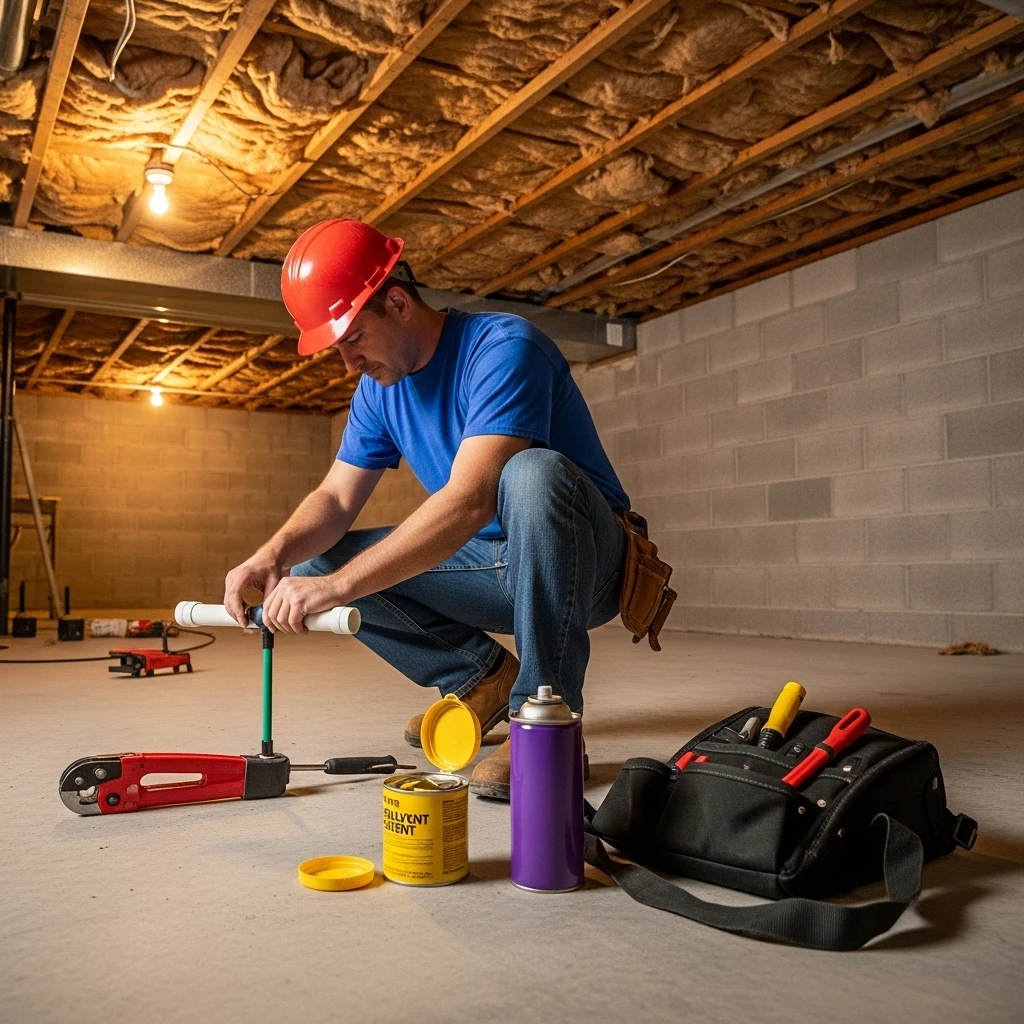









Comentarios recientes